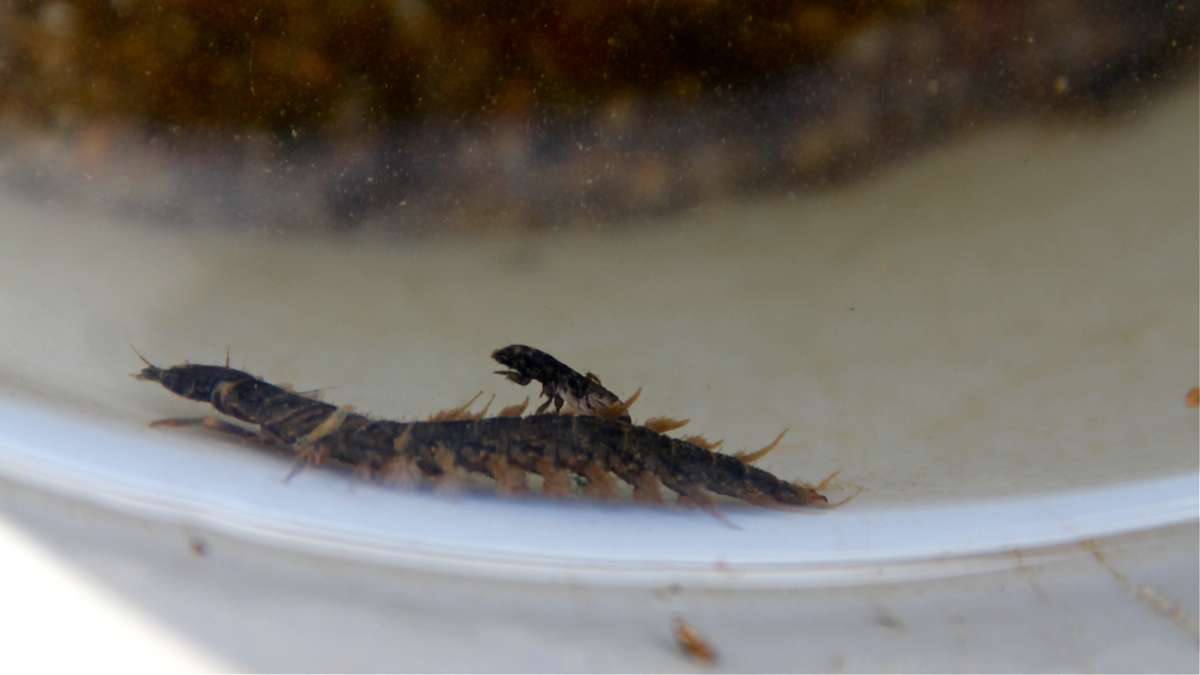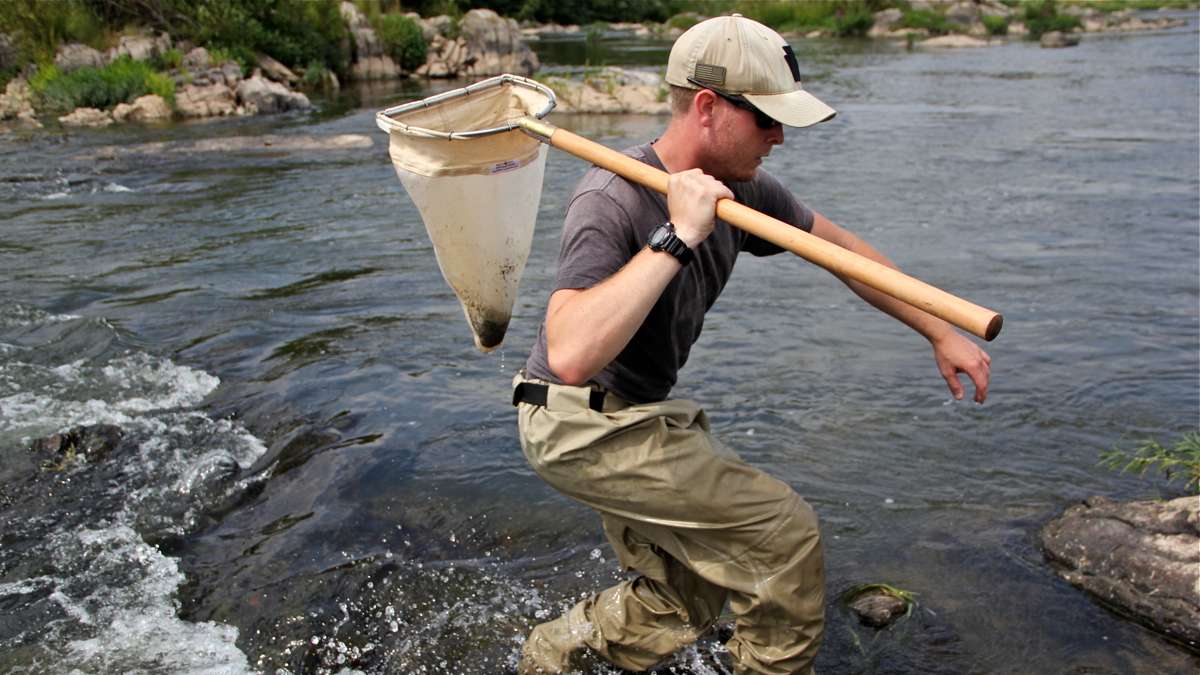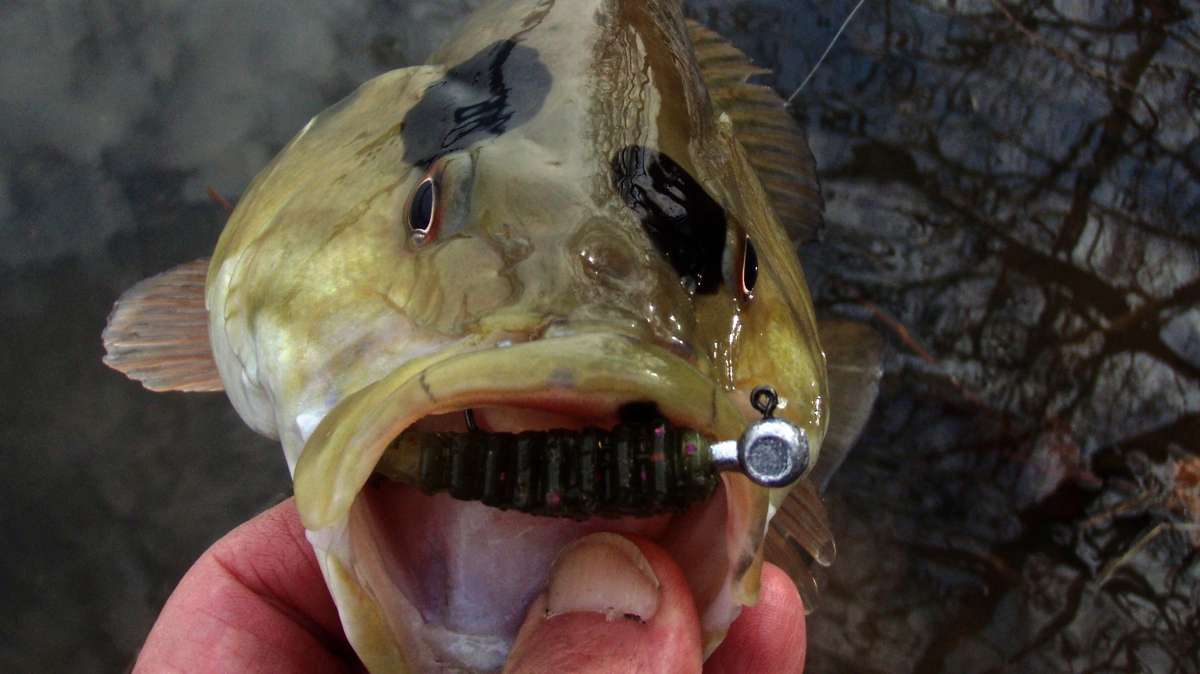The curious case of the smallmouth bass
ListenResearchers are looking into what’s causing open sores, lesions and female sexual characteristics in young, male smallmouth bass.
For the last 10 years, a mystery has been unfolding in the Susquehanna River watershed.
Young smallmouth bass have been found with open sores and lesions. Many of the male fish that make it to adulthood have female sexual characteristics, leading researchers to look into what’s causing these strange symptoms.
Dr. William Yingling has been fishing for smallmouth bass on the Susquehanna River for 56 years.
The retired physician remembers the day in March 2010 when he saw something he’d never seen on a bass before: black splotches on its olive-colored skin.
“I looked at it and the first thing I thought of was that it looked like a mole or a nevus that human beings have,” he says, “And I thought, ‘Well, why do the bass have this?'”
The black spots are just one of the bizarre symptoms anglers have noticed in some of the smallmouth bass they pull out of the Susquehanna.
Starting in 2005, the Pennsylvania Fish and Boat Commission has reported several outbreaks of infectious disease in the young bass that have open sores and lesions on their scales. Researchers have also found intersex fish – adult male bass with female eggs in their testes – since the early 2000s. The smallmouth bass population has dropped, threatening the state’s $3.4 billion recreational fishing industry.
The state Department of Environmental Protection is studying the mystery and doesn’t know what’s causing these problems.
That irritates some anglers like Dr. Yingling. He believes the culprit is more obvious than the DEP admits.
“If we don’t limit chemical pollution going into this river, we’re not going to have any smallmouth bass left,” he says.
But zeroing in on precisely which chemicals are affecting the smallmouth bass and where they’re coming from is proving to be a difficult task for state researchers.
Researchers look for clues
Since 2012, the DEP has been studying the river to figure out if the issues with the smallmouth bass population could be signs of a bigger problem with the water quality in the Susquehanna.
The department is measuring levels of more “traditional” pollutants, such as metals, sediment and nutrients like nitrogen and phosphorous.
The agency has also tested the water for more than 200 compounds known as “emerging contaminants” – pesticides, pharmaceuticals, personal care products and other chemicals that make their way into rivers and streams from agricultural and urban runoff and sewage treatment plants. These compounds have long existed in the environment, but scientists have only recently begun to measure them in small, trace amounts and don’t yet understand their long-term effects on health.
Some of these compounds known as “endocrine-disruptors” may tamper with the body’s hormone systems and smallmouth bass seem to be especially sensitive to them.
However, Josh Lookenbill, a biologist leading the DEP’s Susquehanna River study, says it’s too soon to name a direct cause for the bass’ troubles.
“We started sampling them approximately two, three years ago and we’re just starting to get results from that,” he says. “So if there’s something to tell about that, it’s going to take a little bit of time.”
In June, a study by U.S. Geological Survey (USGS) found the effects of these endocrine-disrupting chemicals were more widespread than previously thought.
Researchers found intersex smallmouth bass in three Pennsylvania watersheds, including the Ohio and the Delaware Rivers. The highest numbers were found in the Susquehanna.
“What I think is that the same chemicals that are inducing the intersex are also affecting the disease resistance mechanisms of the fish,” says biologist Vicki Blazer who led the USGS study.
Over the last decade, Blazer has found intersex bass elsewhere in the Chesapeake watershed, including the Potomac River where fish were also showing signs of disease.
Her latest study shows there could be a correlation between the percentage of land used for farming in the Susquehanna watershed and the number of affected fish. Blazer says there are hormones found in cow manure, for example, which is often used as a fertilizer.
However, she cautions those who would draw any conclusions.
“Whether that’s the natural hormones from animals or pesticides and herbicides, we’re not sure,” she says, “But of course, …the places we looked in the Susquehanna, as well as many of the areas we’ve looked in the Potomac are high agricultural use areas.”
“We still haven’t taken action”
The lack of answers from federal and state researchers frustrates John Arway, Executive Director of the Pennsylvania Fish and Boat Commission.
In July, he wrote a letter imploring the U.S. Environmental Protection Agency to take action. He notes Ohio and Virginia have recently passed laws to cut down on the amount of pollution from farming ending up in the rivers.
“This is happening all around us, but we still haven’t taken action in Pennsylvania,” he says.
Arway has also been pushing the DEP to designate the Susquehanna as an “impaired” river. He believes that could force the state to take actions that would lower pollution levels and help the bass recover.
The DEP says it does not have enough data yet to decide whether the river is impaired and suggests the water quality may actually be improving. Arway accuses the agency of dragging its feet.
“If I walked into a doctor’s office in 2005 and said that I’ve got sores and lesions on me, it wouldn’t have taken nine years for the doctor to figure out what was causing the sores and lesions,” he says.
Last month, state and federal officials sat down to work out a new plan to narrow down the wide range of possible causes for the bass’ problems using the data the DEP has been collecting. The resulting report may take another year to complete and would not be released until 2016 when the state prepares its updated list of impaired waterways.
Blazer with the USGS says she appreciates Arway’s frustration.
“It’s not something that’s easy to get a handle on and we have fish that are exposed to complex mixtures,” she says.
Those mixtures not only include runoff from farms, but also the chemicals from our own lifestyles that are washed into rivers and streams.
“Everybody wants the perfect lawn and they spread herbicides all over and they’re concerned about bacteria, so they’re using anti-microbial soaps and other things that have these chemicals in.”
Blazer says we need to accept there may not be just one culprit in the curious case of the smallmouth bass and that we all could be guilty as charged.
WHYY is your source for fact-based, in-depth journalism and information. As a nonprofit organization, we rely on financial support from readers like you. Please give today.









